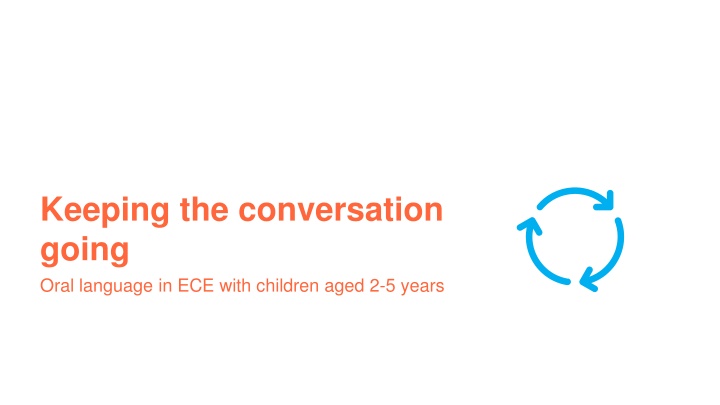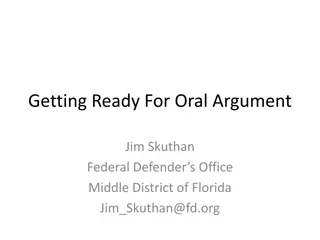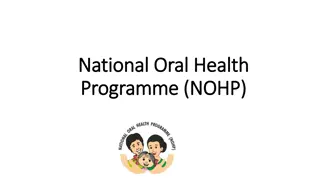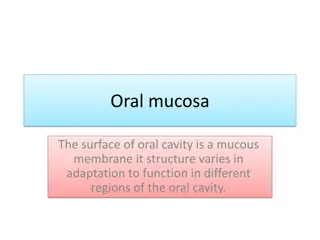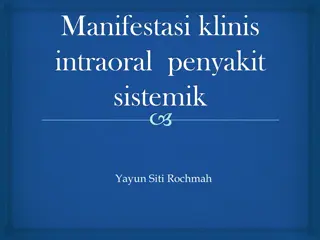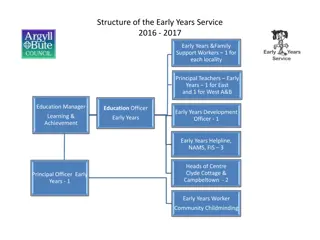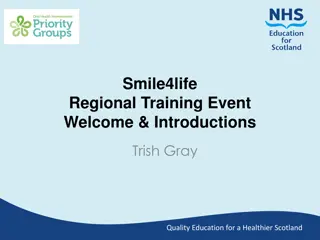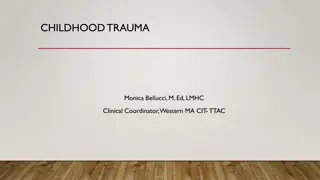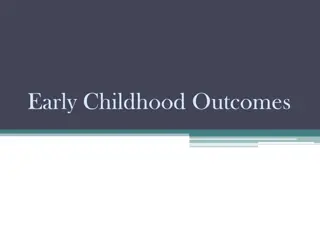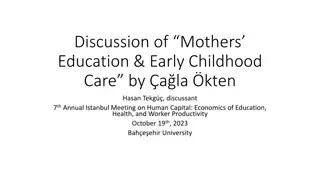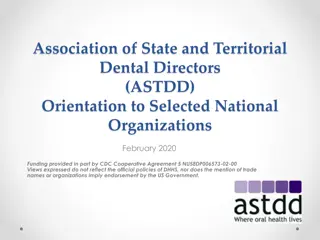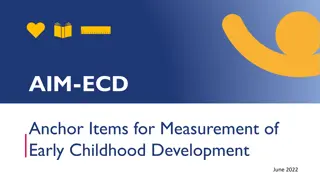Enhancing Oral Language Development in Early Childhood Education
Explore strategies and activities to promote oral language skills in young children aged 2-5 years. This session focuses on maintaining engaging conversations, finding connections, and fostering rich dialogue to support language development. Reflect on past sessions, experiment with questioning techniques, and encourage active participation in extended conversations. Enhance language skills by making personal connections and incorporating storytelling elements.
Uploaded on Sep 19, 2024 | 3 Views
Download Presentation

Please find below an Image/Link to download the presentation.
The content on the website is provided AS IS for your information and personal use only. It may not be sold, licensed, or shared on other websites without obtaining consent from the author.If you encounter any issues during the download, it is possible that the publisher has removed the file from their server.
You are allowed to download the files provided on this website for personal or commercial use, subject to the condition that they are used lawfully. All files are the property of their respective owners.
The content on the website is provided AS IS for your information and personal use only. It may not be sold, licensed, or shared on other websites without obtaining consent from the author.
E N D
Presentation Transcript
Keeping the conversation going Oral language in ECE with children aged 2-5 years
Framing for your context complete before presenting To prepare for this session please: Add your setting s logo to the slides. Add speaking notes to slide 4 about any observations you d like to share from or since the last session, feedback you may have received about using pauses or supporting rich conversations with children, or recapping why you are focusing on oral language and what you aim to achieve. Embed video 3.1 - Personal Connections on slide 7. Share or print copies of the three tip sheets to support the role play activity described on slide 10. Print or email copies of the Reflection and rapid action plan template on slide 11. Add speaking notes to slide 12 about next steps in relation to this PD and your ongoing focus on oral language development. Review all speaking notes and slides. Where you see opportunities to align the content with the goals, practices and values of your setting, please edit the speaking notes accordingly. 2
Agenda Follow up from last session (9 minutes) Finding connections and responding to children s talk (11 minutes) Bringing it all together (15 minutes) 3
Recap of last session: Curious about questions? An introduction to questioning I wonder questions Questions take place within interactions Role play and setup for action between these sessions, Experiment with questioning 4
Discuss At the end of the last session, you were asked to experiment with questions and try using some different questioning strategies. With a partner, discuss: The strategies you tried What you found observed by using the strategies Your reflections on questioning and any considerations for your practice. 5
Ongoing conversations When a child is an active participant in shared, extended conversations, they take more opportunities to talk, their talk is more complex, and educators provide a positive model for oral language use. 6
Making personal connections See and speak: strategies that use learning stories and photos as the focus of conversations Speak and say more: strategies to connect children s own lives and experiences to conversations. 7
Discuss Look at the sections Make it personal and Experiment with linking on the first page of the Tip Sheet 3: Keeping the conversation going With a partner, discuss how you make connections and examples of how you have, or might like to, use these strategies. 8
Responding to childrens talk Your response to children's talk can close down the conversation or it can promote shared conversations So, use a variety of strategies to support a child s ongoing engagement in the conversation: o Repeat talk or gestures, then pause o Build onto what the child says o Use statements o Follow with a question that encourages thinking and reasoning o Paraphrase and model more complex language o Pause before responding 9
Bringing it all together How can you engage one of the children in the scenarios in a rich conversation? Questioning Ask real questions you don t know the answer to Use an I wonder question Value and use children s ideas to collaboratively solve problems Ask questions that are actually open-ended together, Elijah tells you One time my family went on a holiday to the beach too. During outdoor play, Krista exclaims The puddle has almost gone! And there s bugs in it! Personalising conversations Use the Reminiscing Approach to prompt memories Use the Book Reading Approach to read a learning story Vary your approach(es) to enable children to talk more and head complex speech Use pivots to encourage personal connections Scenarios At morning drop-off Lily s dad says to you and Lily, Lily, what have you been excited to bring in today? After reading a story Pausing Play with pausing for different lengths of time Use your knowledge of individual children to determine how long to pause for Responding to children Repeat or copy the child s talk or gesture and then pause Build onto what a child says Use statements Follow with a question that encourages thinking/reasoning Paraphrase Pause 10
Discuss Reflect on what has resonated with you in these PD sessions and the strategies you have already used in your practice. Complete the reflection and rapid action plan, and then discuss with a partner. 11
Wrap up Tip Sheets: 1. Creating space for children s talk 2. Curious about questions? 3. Keeping the conversation going. All available from: https://e4l.org.au/oral-language-ece 12
